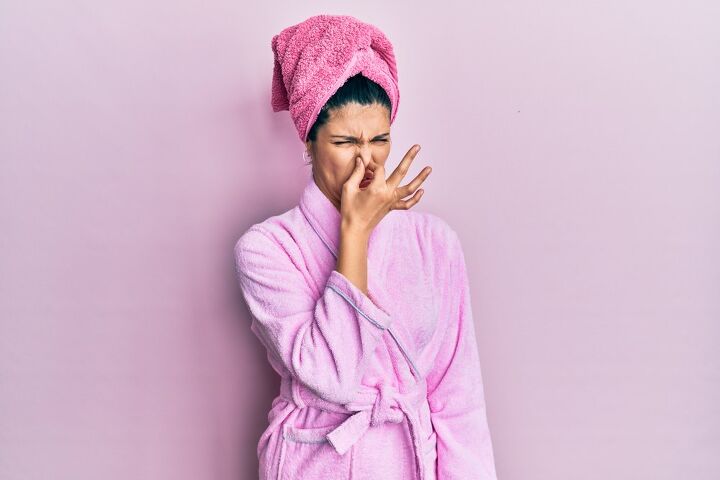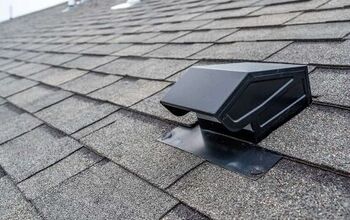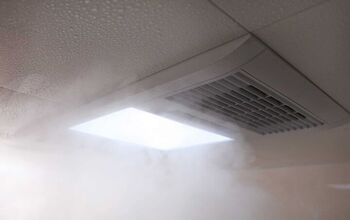Why Is There A Sewer Smell When The Bathroom Fan Is On?

The main purpose of a bathroom fan is to remove moisture from your bathroom and reduce mold. A nice secondary feature of your fan’s negative pressure system is that it also reduces unpleasant odors. So, you may be surprised when you turn on your bathroom fan and notice that the fan seems to be filling the bathroom with an unpleasant odor instead of removing it.
Under normal circumstances, a bathroom fan will be able to eliminate odors in about 8 minutes. If you turn on your fan and instead of getting rid of odors, it seems to draw them in, this could indicate a problem with your sewer system. The fan may be pulling in foul-smelling air from a blocked drain or a damaged sewer line.
We will let you know some factors that may cause foul odors in your drains and what you can do to remedy the situation.
Do You Need Ducts or Vents Installation or Replacement?
Get free, zero-commitment quotes from pro contractors near you.

What Causes Foul Smells in Drains?
If sewer smells start to invade your house when you turn on a bathroom fan, it is a sign that something in your sewer system is not working as it should. While lighting a candle can mask the smell temporarily you will need to find the underlying problem for a permanent fix before the smell begins to take over other parts of your house. Here are some common plumbing problems that may be causing your bathroom to not be smelling its freshest.
A Blocked Sewer Line
If your sewer line is blocked, it can cause sewer to back up in your line and the smells can end up entering your home. Some common causes of blockage are tree roots and non-biodegradable waste. To find out if your sewer line has blockage or damage, you can get a sewer line scope inspection. This inspection will give you a video report of blockage, leaks, or damage to your pipes.
Broken Toilet Seal or Loose Nuts and Bolts
Sewer smells can enter around the base of the toilet if the seal is broken or the nuts and bolts have rusted and lost their strength. To replace the seal on the toilet, you will need to disconnect the water supply line and remove the toilet to add a new seal. When you are done, also calk around the base. This will make a solid seal and keep unwanted smells out.
Improper Installation
If your plumbing was not installed properly, this could lead to sewer smells in your bathroom. One common installation issue can be in the pipe that takes wastewater away. The pipe leading out of your home should keep a small amount of water in the line to provide a barrier to sewer gases.
However, older homes often used S-traps for sinks and toilets instead of P-traps. An S trap may actually siphon water out of the trap which will allow sewer gas to enter your home. S traps are now prohibited in the Uniform Plumbing Code.
No Water in the P-trap
Most sinks and toilets will have a P-trap where the water drains. Its curved shape keeps a water barrier between the toilet and the sewer line. While it is a common belief that this curved pipe was designed to catch objects that wash down the drain, the real reason for this pipe is to keep sewer gas out of the home.
However, if the bathroom is not used very often, the water in the P-trap can evaporate which allows a gateway for sewer gas to enter. If the water has just evaporated, you can refill the P-trap by running water through the drain. You also may experience sewer smells if your P-trap seal is broken, or the pipe is leaky or clogged.
A Cracked Vent Pipe
Another area to check is the vent pipe. Birds nests, snow, leaves, can clog your vent. This blockage can prevent fresh air from getting through your line. If the vent pipe is cracked or damaged, you will need a licensed plumber to find the source of the leak, as this pipe is behind your walls. By sending smoke through the line, the plumber will be able to see where a leak is coming from.
Fast Ways to Get Rid of a Sewer Smell
Sewer smells can indicate deeper rooted issues with your sewer system. Turning on the fan, in this case, may just make the smell worse. Most likely, you will need to call in a plumber to check out your sewer system and create a permanent solution.
However, if company is coming over tomorrow morning, you may want some quick solutions to eliminate odors in the bathroom. The following tips can be at least a temporary fix for bathroom odors.
Air fresher spray
The most obvious solution to a smelly bathroom can be an air freshener spray. However, an air freshener will not remove a bad smell it will only mask it with a nicer smell. The other options on this list will help to kill a sewer smell (at least temporarily). You can choose to use air freshener in combination with one of these other options for a fresh, guest-ready bathroom.
Unclog the drains
A drain can easily become clogged with hair and soap scum. This blockage can lead to bacteria growth and a smelly drain. If the water is backing up in your shower drain, it could mean that it is time to unclog your drain. You can remove the strainer with a Philips screwdriver and clean any debris you find. Disinfect both the pipe and the strainer.
Vinegar solution
If a sewer smell is rising from your drain, you can neutralize the smell with a solution of vinegar and baking soda. Mix 1 cup of baking soda with 1 cup of vinegar and let it sit for about 15 minutes before washing it away.
Baking Soda
Baking soda can neutralize unwanted odors. You can pour a 50-gram packet into a small bowl and set it on a shelf or on the top of your bathroom cabinets. This should help to remove some sewer smells in your bathroom.
Ventilation
If your bathroom fan is pulling in odors, you may want to air out your bathroom by opening a window, instead. This will allow fresher air to enter without pulling up smelly air from your drains.
Disinfect the base of the toilet
While it is common to think that the sewer odor you are smelling is coming from your toilet, this is unlikely since the water acts as a barrier for sewer gas. More likely, sewer smells may be entering from the seal at the base of the toilet. You can disinfect the toilet using a paste made of lemon juice and baking soda. Spread it on the toilet base and seat and let it sit for 10 minutes. Then spray with vinegar and wipe away the solution.
The Dangers of Sewer Gas
Sewer gas can become dangerous if you inhale it frequently. In large amounts, it can even become flammable. This is why it is important to check for the source of your problem and find solutions if your bathroom fan starts pulling in foul odors. This may be the first sign of a deeper-rooted plumbing problem.
Sometimes the plumbing issue can be a simple fix, such as running water to refill a dry P-trap. At other times, you may need to remove the toilet to replace a broken seal. A sewer scope inspector will be able to take a look inside your pipe and let you know if you have a clogged sewer line or damage to your pipes. You may also need to hire a licensed plumber for more intensive work.
If sewer gas remains unchecked in your home, you may begin to experience mild symptoms such as red eyes or respiratory irritation. Other symptoms of sewer gas exposure can be dizziness, nausea, headaches, or drowsiness.
Do You Need Ducts or Vents Installation or Replacement?
Get free, zero-commitment quotes from pro contractors near you.

Related Questions
Why does my bathroom smell bad when it is hot?
In a hot summer season or after a steamy shower you may notice that unpleasant odors in your bathroom intensify. This is because the bacteria present in your bathroom (or sewer line) can multiply in hot temperatures. Make sure to disinfect your bathroom regularly and especially under the bowl of your toilet. Take care of any sewer line problems as soon as possible for a fresher-smelling bathroom.
How do I get rid of moisture in my bathroom without a bathroom fan?
If your bathroom fan is temporarily out of order, or you have an older bathroom without a fan, you may need to find alternative methods to reduce moisture in your bathroom. You can do this by wiping down tile and/or walls after a shower, opening a window or bathroom door, or plugging in a dehumidifier.
When should I clean a bathroom fan?
A bathroom fan serves two functions. It can eliminate moisture to reduce the risk of mold growth, and also helps with ventilation reducing odors. If your bathroom fan is dirty, it won’t be able to do its job effectively. About every 6 months it is a good idea to dust your bathroom fan to keep it in working order.

Alex Praytor is a native Texan who got her degree in English Literature and decided to travel the globe. She finds the architecture and design of homes across cultures fascinating. In her spare time, she visits coffee shops with her family and creates projects for their own home. Alex enjoys sharing tips on how to keep repairs up to date while turning a house into a home.
More by Alex Praytor



























